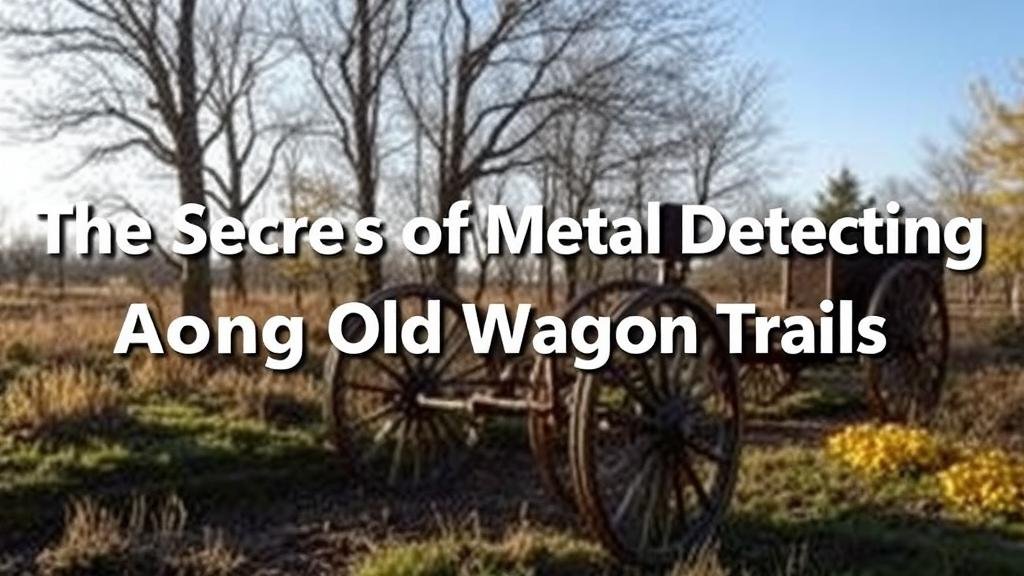The Secrets of Metal Detecting Along Old Wagon Trails
The Secrets of Metal Detecting Along Old Wagon Trails
Metal detecting can be an exhilarating hobby, particularly when it involves exploring the historical landscapes of old wagon trails. These routes, once trodden by pioneers, merchants, and settlers, are often rich with lost artifacts that tell the stories of their time. In this article, we will explore the strategies, techniques, and historical context behind metal detecting along these ancient thoroughfares.
Understanding Old Wagon Trails
Old wagon trails served as critical pathways for transportation and trade in the 19th century, especially in North America. often connected towns, mines, and farms, reflecting the expansion of commerce and settlement. For example, the Oregon Trail, one of the most famous, spanned over 2,170 miles and facilitated the movement of thousands of settlers from the Midwest to the West Coast.
Over the years, these trails have witnessed significant human activity, leading to the loss of goods, as well as the abandonment of personal possessions. As a result, the ground along these routes is a prime location for metal detecting, as it may conceal remnants of history.
Choosing the Right Equipment
To maximize your success in detecting along old wagon trails, selecting the appropriate metal detecting equipment is essential. Here are some critical factors to consider when making your choice:
- Type of Metal Detector: Different detectors cater to various environments. For rocky terrains, a detector with a high frequency might be suitable, while a multi-frequency model can be effective in varied soil conditions.
- Discrimination Features: A model with advanced discrimination settings allows you to filter out unwanted metals, focusing on the specific items likely to be found, such as coins, tools, or personal items.
- Search Coils: Consider the size and shape of the search coil; smaller coils can help locate targets in highly mineralized areas, while larger coils provide greater depth detection in more open spaces.
Researching Wagon Trails
Prior to heading out, thorough research can increase your chances of uncovering valuable artifacts. This may include:
- Historical Maps: Acquiring and studying old maps can help you identify the original paths of these trails. Online resources and local historical societies often provide access to maps that document old routes.
- Local Histories: Books and articles detailing the history of specific trails can lead you to notable events or areas where detectible items may be found, such as campsites or trading posts.
- Oral Histories: Engaging with local historians or long-time residents can yield valuable insights into lesser-known routes and hotspots.
Techniques for Metal Detecting
Once you are on an old wagon trail, employing effective detection techniques is crucial. Here are some strategies:
- Grid Searching: Systematically covering the area in a grid pattern ensures thorough detection and minimizes the chances of missing targets.
- Slow Scanning: Moving slowly while scanning increases the probability of detecting buried metals. Imagine painting a wall; you would not rush and risk missing spots, so take the same approach with your detector.
- Varying Swing Speed: Adjusting the speed of your swing depending on the sensitivity settings can enhance signal reception and improve your chances of locating finds.
Understanding Your Finds
When you discover something valuable, understanding its historical context is vital. Common finds along wagon trails might include:
- Coins: Loose change or mint items that were dropped by travelers.
- Tools: Farming or crafting tools that may have been lost during transit.
- Personal Effects: Items such as buckles, buttons, or even jewelry that can offer insights into the lives of those who traveled the trails.
Legal Considerations and Ethics
Before you begin metal detecting, it is imperative to understand the legal and ethical considerations involved. Many areas have specific laws regarding digging and artifact retrieval:
- Permission: Always seek permission from landowners before detecting on private property.
- Regulations: Familiarize yourself with local laws regarding metal detecting on public lands and historical sites, as regulations vary significantly.
- Respect the Environment: Practice “Leave No Trace†principles by filling in holes and not disturbing the natural habitat.
Conclusion: Engaging with History
Metal detecting along old wagon trails not only serves as a leisure activity but also offers a profound connection to history. By utilizing the right equipment, researching thoroughly, applying effective techniques, and adhering to ethical standards, hobbyists can uncover pieces of a bygone era.
As you embark on your metal detecting journey, remember that each find enriches our collective understanding of the past and showcases the daily lives of those who shaped our communities.
Engage with your local metal detecting community, participate in discussions, and consider sharing your findings in local museums or historical societies to contribute to broader historical narratives.



